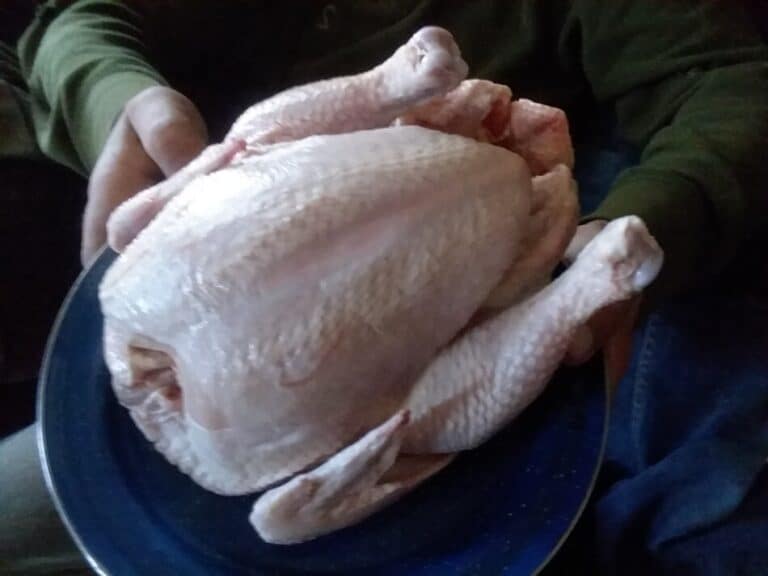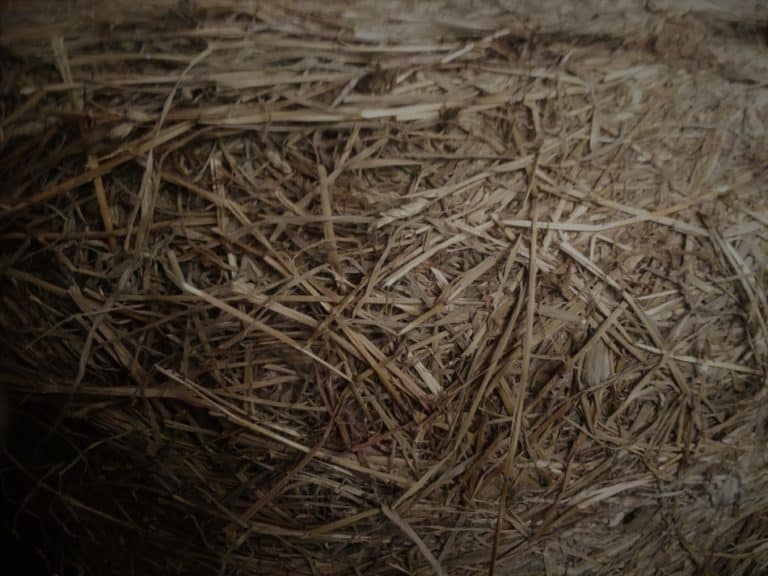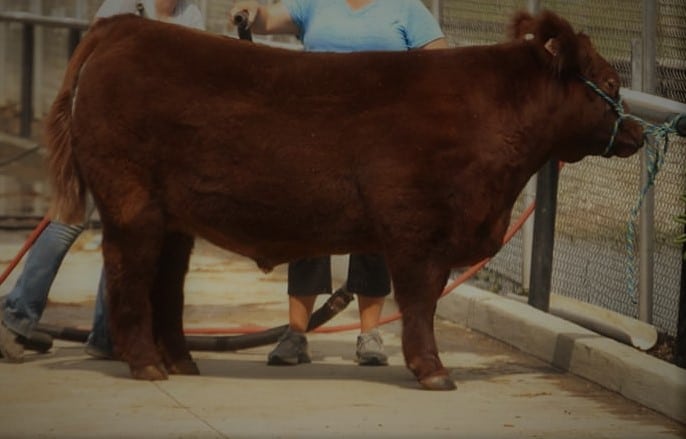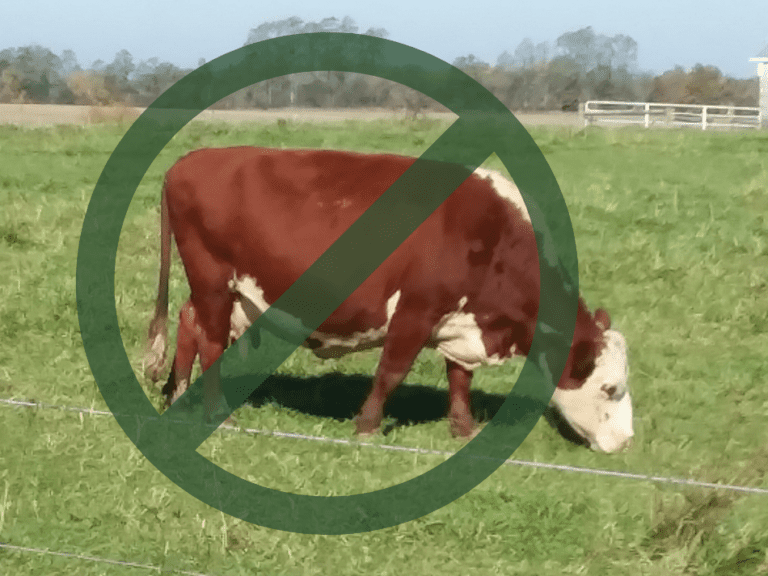Haylage: What Is It And Why You Would Want To Use It

What the heck is haylage and why should you know about it?
Well, the first answer is easy, haylage is fermented hay. What can it do for your livestock? Let’s look into it.
Haylage is a fermented forage that is fed to animals like hay. Haylage is made by baling the forage when wet (45-55% moisture) then wrapping it to get proper fermentation by excluding air.
Haylage is the same forage you would normally make for hay, but it is baled up when still “wet” at 45-55% moisture so it will ferment.
Think about it like sauerkraut compared to shredded cabbage.
They both started out the same but the results are significantly different as far as taste, thanks to the fermentation process.
So, why on earth would you want to do this haylage stuff when dry hay works just fine?
I like dry hay and actually prefer feeding dry hay to some of our animals. Choose High Quality Hay gives you tips on how to spot good hay that is worth your money.
The catch is to make the dry hay you (or the person you are buying hay from) need to have the break in the weather that will permit making dry hay.
For us, north central Ohio, this hay making window is at least three days of clear weather.
One day to cut and two days to dry (at a minimum). Then we would do the baling in the afternoon of the third day.
Normally, there is enough of a dew on the grass in the morning that waiting until early afternoon to start raking, the prebaling step, is very normal.
Given the choice, I prefer a wet year to a dry one.
Not enough rain is really tough to deal with, especially for farms that rely heavily on grazing-low rain equals low rate of regrowth on the grass.
Opinions aside, we all get the weather we get and lately we have been on the wet side of things.
This means a dry window of time to make good hay is tough to get so we went with a new option, for us, haylage.
Oatlage: What Is It? goes over the other type of haylage we love, Oatlage, which is just haylage made of oats, is a great way to harvest oats as wonderful feed for your stock.
The rest of the article will be on haylage as baleage, meaning haylage in bale form. Some farms make haylage like silage-chop it up and put it in a silo.
That is also called haylage since there is no grain in it and it is made from a hay type forage. Here we’ll focus only on the baled haylage.
Haylage starts out like all other hay
Making haylage starts out like making any other normal hay, you cut the forage with a mower to get the long stems to start to dry.
Don’t use a mower that grinds up the grass, your lawn mower is out! You need the stems of the grasses to stay long!
We use a mower conditioner, commonly called a haybine, that cuts the grass then smashes the stems in a set of rollers so the forage will dry faster.
Then just like making dry hay you wait for the forage to dry down.
Haylage is baled at 45-55% moisture
Here is where haylage making veers off of normal hay making, you only want the haylage to dry down to 45-55% moisture.
That will seem very wet if you are used to dry hay.
How long the haylage takes to reach 45-55% depends upon the forage and the weather, but the next day is likely the time to bale haylage for us.
We called a local guy who advertised online that he did custom baling and wrapping, be sure to call before you need it!
Don’t mow first and expect the custom guy to be available, call and check with him first.
The hay was baled in a round baler, some farms use a big square baler, and left in the field.
Then we went out and moved the bales out of the field close to where we wanted them to be put once they were wrapped.
Haylage Mistakes and how you can avoid them gives the most common mistakes farmers make when making or handling haylage and what to do to prevent or fix those problems.
Haylage needs wrapped ASAP
Next step is the wrapping, in either a tube, all wrapped together like a big sausage, or individually wrapped, so the bales look like marshmallows.
Since we were running really late on time ours were tube wrapped, just because it is faster than wrapping individually.
Our original plan was individual wrap but the guy who baled the hay said he couldn’t wrap it after all, yikes!
My husband called around and got two guys who actually don’t normally do custom work to come with a tube wrapper.
Since this was already after dark, after 9 p.m. we were glad to get it done!
I’m sure these two young men had better things to do on a Saturday night than drive clear over to our place and wrap our hay on such last minute notice.
We truly appreciated their work, and they were fast and did a super job!
After wrapping, haylage has to cure
Now the haylage has to cure, meaning ferment for a while to turn into haylage.
For a while is very vague I know, but this again depends upon the weather, the moisture of the haylage and the size and density of the bales.
Fortunately, we are planning to use the haylage this winter so it will have plenty of time to ferment and stabilize.
If you want to use the haylage soon, rather than waiting until the winter, you’ll still need to give it time to cure. See what you’ve got at 6 weeks.
Haylage is wrapped in tubes or single bales
Around here the common options for haylage are wrapping individual bales or making one long tube per batch of haylage.
Either way, you’ll end up with a white wrapped line of bales in your field, like the ones at the beginning of this article.
Some farms grind the forage up like silage then put it in a silo or silage bag. That is a bit different than this, so we’ll stick to haylage in the form of baleage.
Haylage has advantages over hay
As with most things, each choice is a package deal.
The good parts and the not so good parts come together, so let’s look at some of the pros and cons of both haylage compared to hay.
Haylage is faster to make
Haylage is faster to make from start to finish.
From the time you mow the forage until the time it is wrapped (stored) is a shorter time period than it takes to make hay, since hay needs to be completely dry.
Haylage stores anywhere, no barn needed
Haylage can be stored anywhere.
The bale is already wrapped it can be stored anywhere that is convenient for you to get to later, it does not need to be in a barn!
As long as the wrap is not damaged the haylage inside will be stable.
Haylage is wet, no dust
Haylage has no dust.
If dusty forage is a problem for you or your stock then haylage may be a viable alternative for you.
Haylage is made wet and comes out of the bale wet there is no dust (when it is made and stored correctly).
Haylage has a high feed value
Haylage has a higher feed value than dry hay.
Since haylage is made sooner than hay, more of the nutrients that were in the plants when you mowed them remain in the haylage.
Haylage will have a higher protein value than dry hay.
Haylage has disadvantages vs hay
Haylage takes special equipment.
Haylage requires a wrapper and a tough baler
Unless you are already making some haylage you will not have all of the equipment needed to make the haylage.
Since the bales are heavy even your older round baler may not be able to bale the wet forage because of the extra weight.
Also needed is a wrapper, tube or individual, and a loader or skid steer to get the bale into the wrapper.
Haylage takes a lot of plastic per bale
Haylage also requires plastic to wrap the bales.
This plastic is not as easy to find as the baling twine, so be sure to have a source located before you need it.
Haylage bales require loader to move them
Haylage will also need that loader or skid steer later when you want to move the bale.
These bales are super heavy and do not roll, so a loader of some sort is required to get the haylage to your animals when you want to feed it.
Haylage can be ruined, plastic can tear
Haylage can be ruined.
Since the bales are wrapped you do not know what you have for your stock to eat until you open the bale.
If something went wrong in the fermentation process, like the plastic was torn and introduced air, then the haylage will be unsuitable as feed.
Haylage is a hay alternative
Haylage is an opportunity to harvest forage for your stock when your harvesting conditions make dry hay unlikely to be successful, or you just want to preserve more of the nutrients in your forage.
Haylage does require more mechanized handling to make and feed and is heavier per bale than hay.
Many people hire a farmer with the equipment to bale and wrap their hay. This is called custom work and needs to be planned ahead of time.





